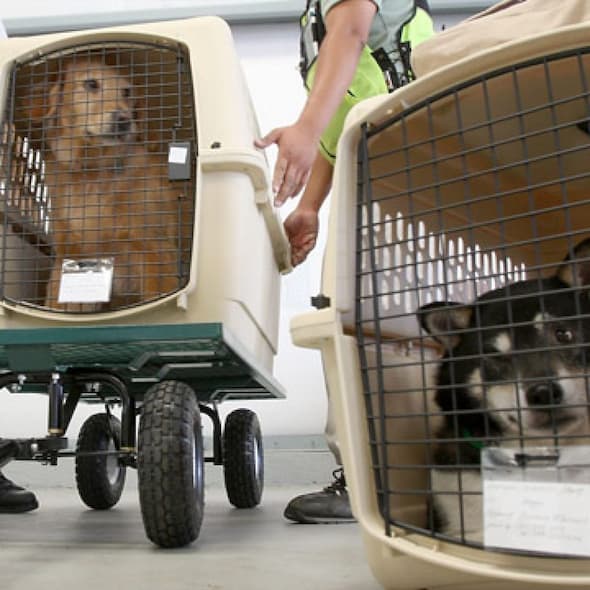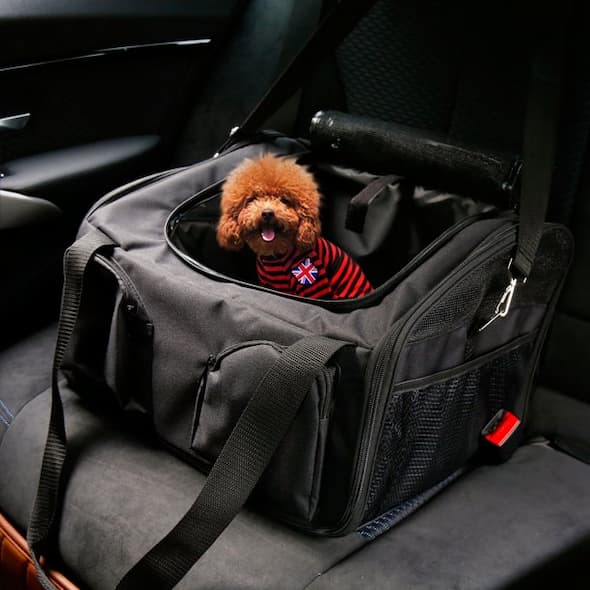As a new pet parent, it’s challenging to know what to look for when choosing the best dog food, the best dog bed, deciding whether dog collar or harness is best, the best grooming products, etc. The same applies to do dog carriers as well. To be able to take your dog to the vet, to a dog show, on a holiday trip or anywhere you may want in a safe manner, you will need to invest on a good dog carrier.
Dog carriers are small, portable boxes, crates or cages used to transport pets safely from one location to another. In addition to providing a safe and secure environment for dogs, dog crates can also help reduce your pet travel anxiety, especially on long journeys. To help you get a better idea of which one is better for your dog and what you need to use the product for, below we compare the differences between the different types of dog carriers available.

Dog Carriers for Air Travel
Nowadays, most airlines allow travellers to bring their dogs. However, there are some specific criteria that must be followed before flying with a dog. One such criterion is that you need to keep your furry companion in an airline-approved dog carrier for air travel. Every commercial airline has its own requirements and specifications to make sure that your pet and other passengers onboard travel comfortably and safely to the final destination.
Airlines that allow their passengers to bring their own pet onboard require that the pet must sit in approved dog carriers for air travel with a waterproof bottom and remain underneath the seat in front of the pet owner. The carrier must be big enough for the pet to stand up, turn around and lie down. It should also be ventilated on at least three sides. Generally, only small pets are allowed inside the cabin. Larger dogs have to be placed in the cargo hold in dog crates which must have a metal door that is durable enough so the dog can’t bend the carrier. Your name (the pet owner) and address must be visible on the crate along with a “Live Animal This Side Up” notice.
Hard-sided models are popular carriers for air travel. They are preferred for their durability and rugged construction. The hard shell offers a bit more protection for your dog and it is easy to clean. Soft-sided carriers are also approved by some airlines to go under the seat. Check with the airline for their requirements as well as the size and weight specifications from the manufacturer.

Pet Carriers for Cars
Just like you install car seats for your human babies, you can use car seat carriers for your fur babies. These carriers are designed to fit in vehicles and can accommodate smaller to larger pets up to 11 kilos. With a pet car seat, you’ll be able to safely travel down the road with your pet. For added comfort, look for a car seat made of fleece and filled with foam.
For larger pets, sturdy crates may be a better option. Unlike cages, these crates feature a safety net to keep your pet’s travel experience stress-free and also come with an open gate to allow you to communicate with your pet during the car ride.
Backpack and Purse Pet Carriers
If you have a small pet and would like to take it with you on walks, shopping trips, hike or appointments, consider buying a backpack pet carrier. Many ask, are dog backpack carriers safe? Yes, they are. These carriers have a reinforced floor to ensure the safety of the pet as well as ventilation holes and a roll-down mesh window.
Available in different colours, sizes, materials and designs, you’ll sure have fun when shopping for a backpack pet. In fact, some backpack and purse pet carriers have extra pockets that are great for giving you extra storage space. Some feature zippers to allow for easy use and some even come with wheels, making it possible to convert them into a roll-along carrier.

What Size Pet Carrier for Dog to Choose?
In order to select the correct crate size, you need to know your dog’s height, length and weight. The carrier should be large enough for your pet to turn around easily and curl up or stretch out when lying down. Measure his back from the neck (where the collar sits) to the base of the tail. Then add a couple of centimetres to that measurement.
You’ll also need to measure shoulder height from the top of the shoulders to the ground. For soft-sided carriers, add 5 to 7 centimetres to shoulder hight. For hard-sided carriers, add 5 to 12 centimetres. Backpacks and purse pet carriers are meant to be snug and cozy. With them, the dog is supported against your body, not by the carrier itself. Check the manufactures list size and weight limits to find the right one for your dog. If it is between sizes, choose the larger size.
